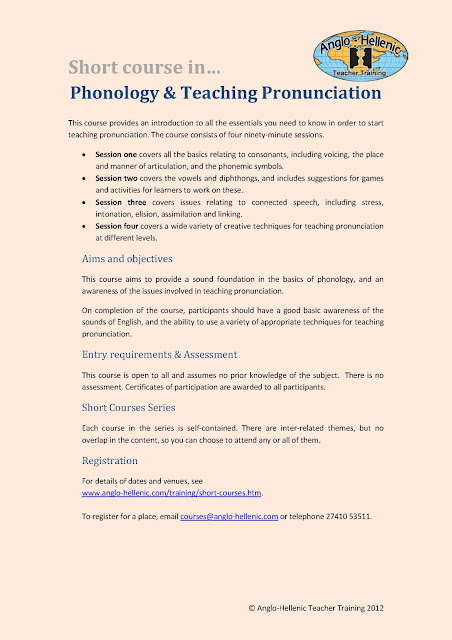Saturday, March 30, 2013
Thursday, March 28, 2013
Thursday, March 21, 2013
Thursday, March 14, 2013
Sunday, March 10, 2013
Working with ELT Materials - part two
Working with ELT Materials
Part two – selecting coursebooks
In the first article of the series we discussed
ways of finding teaching materials. The next step is to select the ones you
want to consider adopting. Choice of coursebook will have a major impact on the
style and content of your lessons, and may even make the difference between
success and failure for your students, so it’s important to consider it very
carefully. Here are a few of the issues to look at.
Are the materials
up-to-date?
Once a coursebook has been published, it
generally remains on the market for several years. And teachers, having
invested the time and effort required in adopting a course, are likely to want
to go on using it, as long as it worked well the first time. So one of the
first things you should look at in a coursebook is the date of publication. You
will certainly want to avoid starting to use a book when it is already several
years old, but even if the publication date is relatively recent, the book may
still seem to be behind the times. Some materials quickly become dated,
particularly if they contain topics relating to the latest movies, current
fashions and trends in music. These are the kinds of items that are likely to
interest and motivate our students, but fashions change quickly so it’s
probably better to get materials on these subjects from other more current
sources such as magazines and internet sites.
What components are
available?
The next thing to look for is the range of
components available. As a minimum, there will be a student’s book and a
teacher’s book. The teacher’s book may be a separate volume, or may be
interleaved with the student’s book, making it easier to refer to during the
lesson and so reducing preparation time. As well as providing the answers to
all the exercises, the teacher’s book provides guidance on how to use the
materials in the student’s book. This can be very helpful, especially for
novice teachers, but if it’s too prescriptive it can restrict flexibility and
stifle your creativity. Some teacher’s books also contain additional resources
and communicative activities, or there may even be a separate book with these.
Most courses also provide a workbook with extra
practice activities for the students, usually done as homework. And,
particularly with courses published in Greece, there may be a companion. This
gives explanations of the new vocabulary in each lesson, often with Greek
translations, and additional practice activities.
There will also be one or more audio CDs and
possibly other multimedia components. Most major courses these days also have
interactive whiteboard software, so if you intend to use the IWB in your
lessons, you will need to check that this is available for whatever course you
select. And there may also be other components such as a grammar book, test
booklet, or even flashcards and stickers.
What levels are
covered?
Most coursebooks are published in series that
provide continuity over several levels. Of course you will need to select
materials at the right level for each of your classes, but you should also make
sure that they match the age of your students. For example, some courses at
Beginner level are designed for adults, and this is reflected in the style of
the materials and the choice of topics.
These are a few preliminary considerations that
you should bear in mind when making your initial selection of coursebooks to
examine with a view to adoption. The next step is to conduct a detailed
evaluation of the materials, and that’s the topic of our next article.
© Peter Beech 2013
Thursday, March 7, 2013
Subscribe to:
Posts (Atom)









